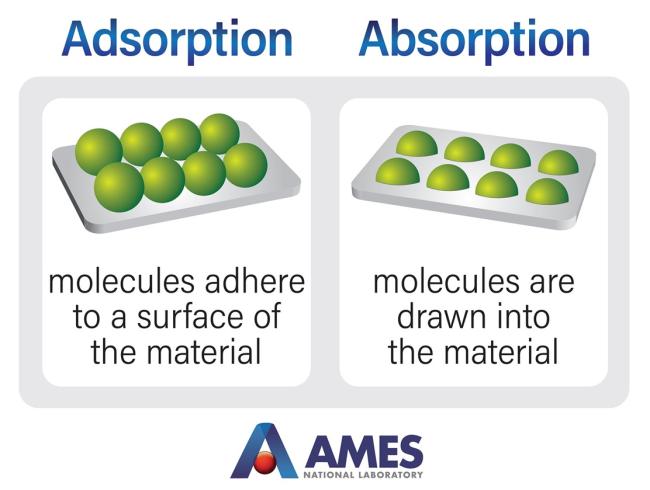Throughout history, scientists have learned a great deal from the natural world and found ways to recreate many natural processes in the lab. Bringing curiosity and scientific rigor to nature has brought us DNA editing, earthquake prediction, hydroelectricity, and even materials like hook and loop fasteners. Examples like these exist in every scientific discipline, and scientists continue to learn about the world while advancing knowledge in various fields.
In the same way, a team of scientists from the U. S. Department of Energy Ames National Laboratory has made advances in their investigation of the natural separation processes involving one of the earth’s most basic materials—clay. Ionic adsorption clays and micas naturally filter and hold on to rare earth elements that come from the weathering of rocks. By studying the process, the team hopes to learn how to control and replicate it in the lab, providing a new way to harvest rare earth materials.
“Clays are known to adsorb all sorts of metal ions,” said Tanya Prozorov, a material chemist at Ames Lab and team lead. “As one of my colleagues

described, ‘clay is the garbage can of the universe.’ Whatever flows in the river nearby, clay will adsorb. Clays are used to store nuclear waste and to remove heavy metals from the environment. Clays are old, natural minerals, but clays are very interesting in terms of how they work.”
Ion-adsorption clays preferentially pick-up heavy rare earth elements that are released through weathering and dissolution of granites and igneous rocks by rainwater. Water then flows through the clays resulting in a natural separation process.
Prozorov explained that this process can take thousands to millions of years in nature. Since these are unrealistic timelines to translate into the lab, her team works with simulated conditions that reduce the timeline to days or weeks. “It’s a great way to understand the mechanisms without waiting for geologic time to pass,” she said.
The team has been studying ion-adsorption clays and micas as model materials for understanding this process of rare earths adsorption and recovery in the lab. They want to replicate the process and transform it into a controllable process. To do so, they use synthetic clay analogs to help figure out the most important features of natural clay minerals, such as the localized atomic structure and the electric potentials.
“Clays and micas are made primarily of aluminum, silicon, oxygen, potassium, magnesium, and sometimes other trace elements,” Prozorov explained. “When you introduce a different chemical element into their structure, for example, boron, lithium, or iron, this changes clays’ localized chemistry and electrostatic landscape, and affects how rare earth cations can get in, move around, and become adsorbed and released with a suitable solvent later.”
The team found that they could control which rare earth elements were adsorbed based on the specific impurities introduced to the clay. This team’s computational efforts proved especially valuable, helping to reveal fundamental connections between binding mechanisms and the energetics of metal interactions with clays and micas—insights that were not readily apparent through experiments alone.
Once the clay has picked up the rare earths, they need to be recovered. This step of the process involves using solvents that cause the clay to release the rare earths. The team is working to match certain solvents to certain elements, so that recovery of specific elements is possible, rather than all of them at once making the process more efficient and adaptable.
“It’s new science,” said Prozorov. “It’s very interesting and it’s also very practical.”
Recently, some of these findings have been published in: “Rare Earth Selectivity and Electric Potentials at Mica Interfaces,” written by Michael D. LaCount, Tanya Prozorov, and Shawn M. Kathmann, and published in ACS Applied Minerals & Interfaces.
This work is part of a collaboration with scientists from Pacific Northwest National Laboratory.
Ames National Laboratory is a U.S. Department of Energy Office of Science National Laboratory operated by Iowa State University. Ames Laboratory creates innovative materials, technologies, and energy solutions. We use our expertise, unique capabilities, and interdisciplinary collaborations to solve global problems.
Ames Laboratory is supported by the Office of Science of the U.S. Department of Energy. The Office of Science is the single largest supporter of basic research in the physical sciences in the United States and is working to address some of the most pressing challenges of our time. For more information, please visit https://energy.gov/science.
